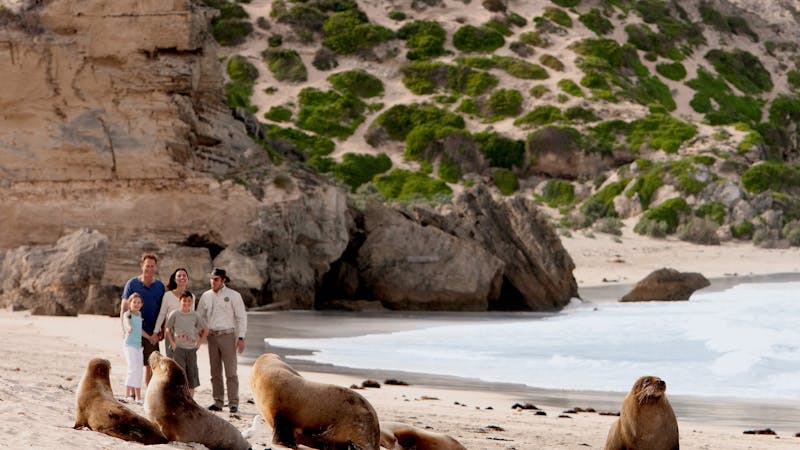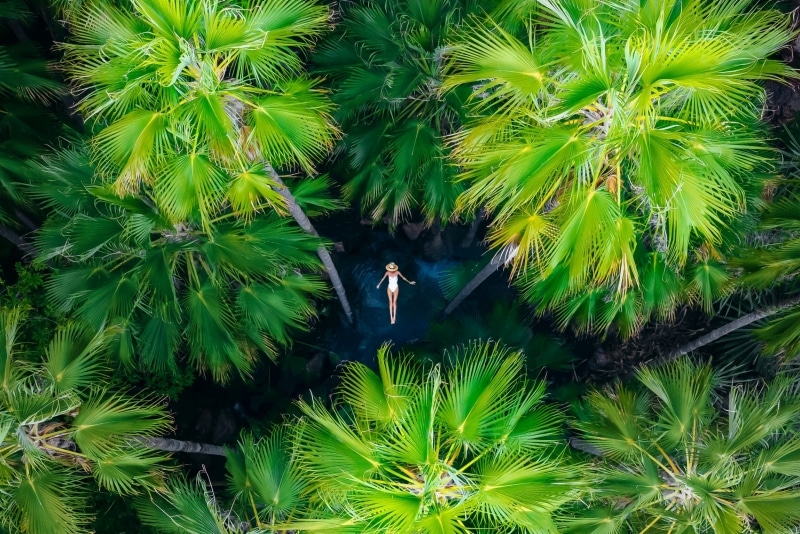
Fun facts about kangaroos
There’s no Aussie animal more iconic than our cute kangaroos. You might be familiar with these hopping marsupials, but we bet you didn’t know these fascinating facts.
Baby kangaroos, called joeys, weigh less than two grams (less than an ounce) at birth. That’s about the size of a jellybean! After they’re born, they climb up their mother’s bellies into a comfy pouch to grow for another six months before emerging to greet the world.
Because of their long feet and large tail, kangaroos can’t walk or hop backwards. This is one of the reasons the kangaroo appears on the Australian Coat of Arms, representing a nation that is always moving forward.
Think all kangaroos are the same? Think again. There are dozens of species of kangaroos and wallabies. There's the 2m (6ft) tall red kangaroo you'll see bounding across the outback, and then there's the musky rat kangaroo, whose tiny bodies are typically smaller than a rabbit. But one thing’s for sure - they’re all downright adorable.
While most kangaroos keep their extra-large feet on the ground, tree kangaroos spend their days in the rainforest canopy. They’re specially adapted for a life in the treetops, with a long tail that helps them leap from branch to branch.
Powerful hind limbs help kangaroos hop huge lengths with incredible efficiency. In fact, kangaroos are the only large animals that move by hopping. The biggest kangaroos can clear 8m (25ft) with one jump. You’d have to take about ten steps to cover the same distance.
That’s right – female kangaroos can suspend the development of their joeys in a process called embryonic diapause. This might happen when food is scarce or another joey is still in her pouch. The process allows the pregnancy to continue when conditions are right.
Kangaroo tails are much more than an appendage. They’re incredibly muscular, and kangaroos use them like a fifth limb when moving on four legs. Their tail is even strong enough that it can carry a kangaroo’s entire body weight when they ‘box’, lifting both their hind legs to kick their opponent.
Kangaroos are culturally and spiritually significant to Aboriginal and Torres Strait Islander people across Australia. The kangaroo is often depicted in ancient rock paintings, which can date back tens of thousands of years. The name ‘kangaroo’ comes from the ‘gangurru,’ which is the name given to eastern grey kangaroos by the Guuga Yimithirr people of Queensland’s tropical north.
Kangaroos are social creatures, and they live in groups called mobs, troops or courts. They have plenty of ways to communicate with each other, including nose touching, stomping their hind legs and growling. Mother kangaroos will even make clicking or clucking sounds to call their young back to them.
Kangaroo joeys might look clumsy, but if there’s danger, they know just where to go. Young joeys will somersault into their mother’s pouch – sometimes at high speed – to seek safety. A few squirms will have them right-side-up again.
Spot kangaroos

The Kangaroo Sanctuary Alice Springs
Experiences • Nature and wildlife, Evening, Half Day or Less
Experiences
Learn More

Lucky Bay
Experiences • Natural Attractions
Experiences
From AU$8

Ballarat Wildlife Park
Experiences • Zoos, Sanctuaries, Aquariums and Wildlife Parks
Experiences
From AU$29.00

Kangaroo Island Trails
Experiences • Food and Wine Tours, Adventure and Outdoors Tours, Nature and wildlife, Sightseeing Tours, Full Day, Half Day or Less
Experiences
Learn More

Kangaroo Haven Wildlife Rescue
Experiences • Zoos, Sanctuaries, Aquariums and Wildlife Parks
Experiences
Learn More

Wildlife Habitat
Experiences • Zoos, Sanctuaries, Aquariums and Wildlife Parks
Experiences
From AU$43




































































































































